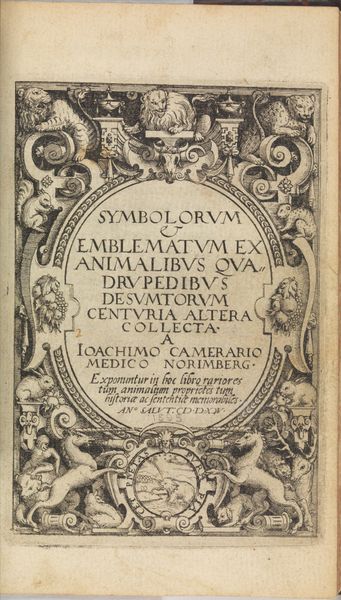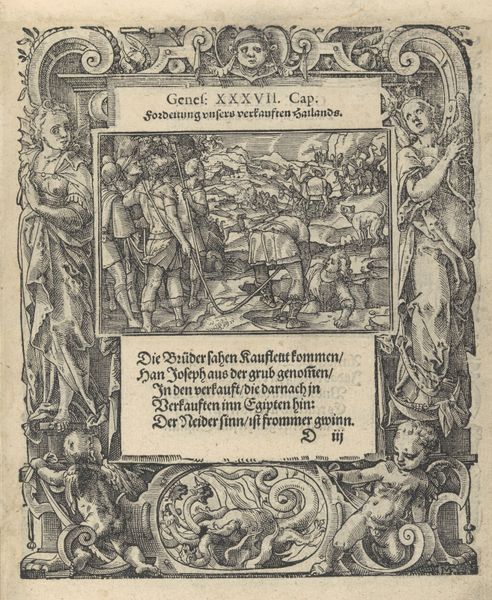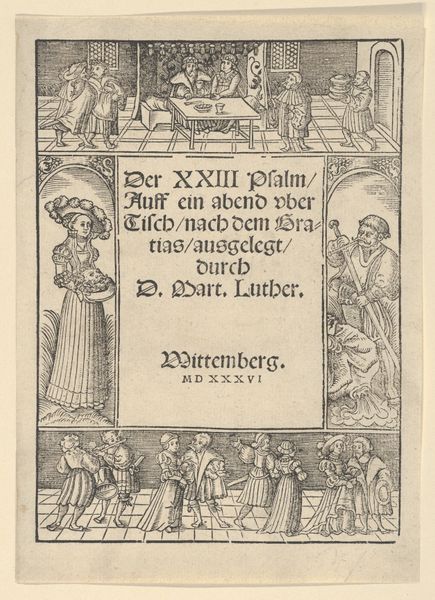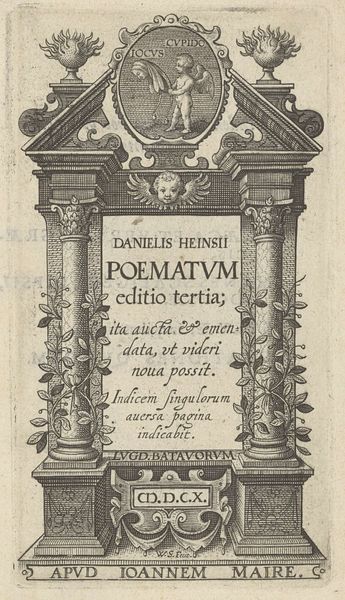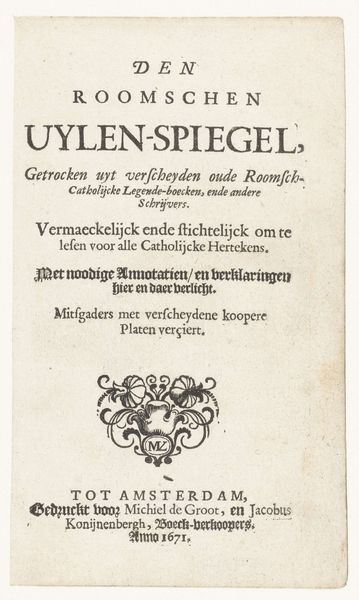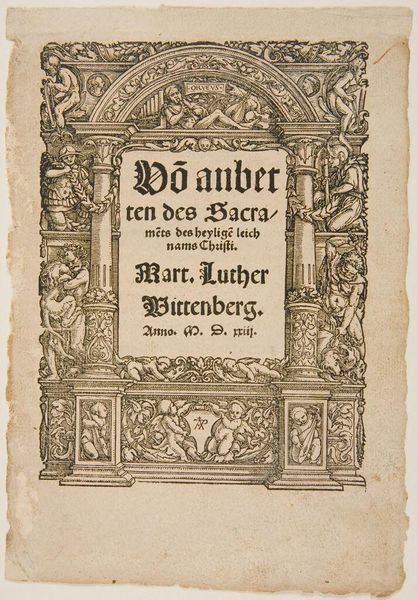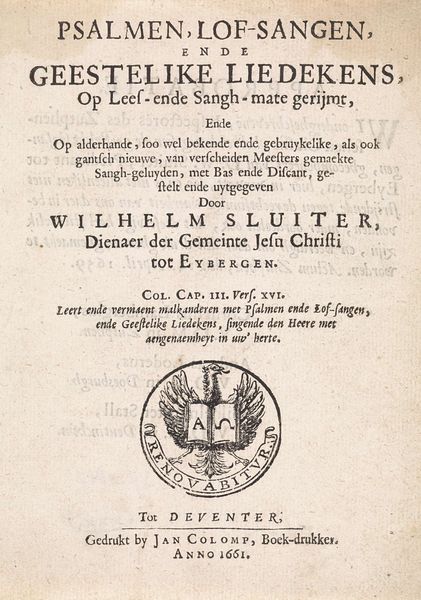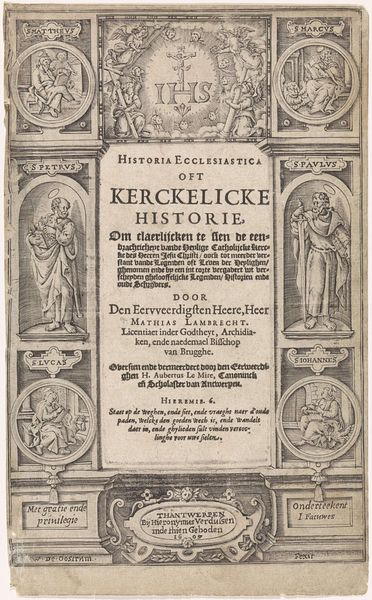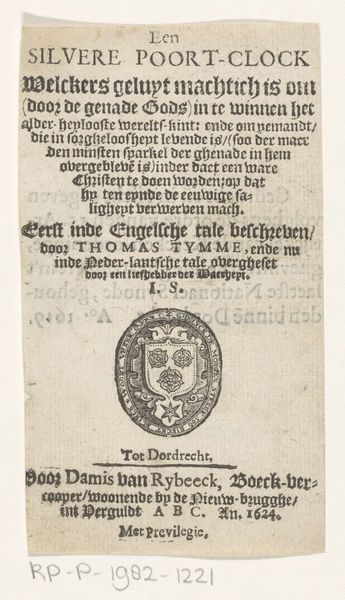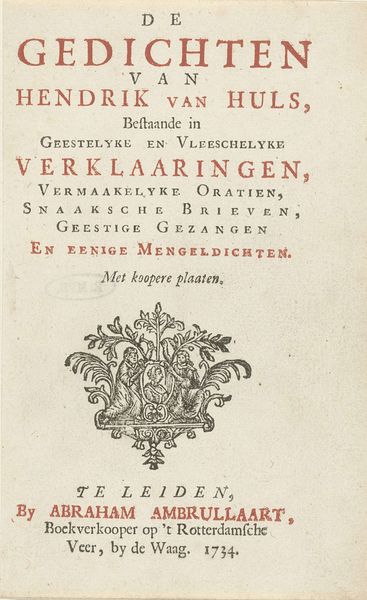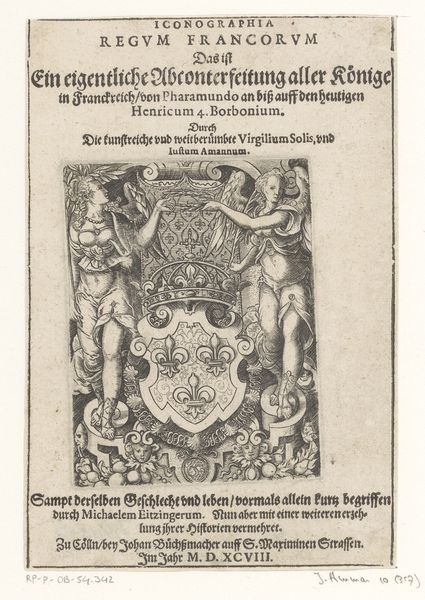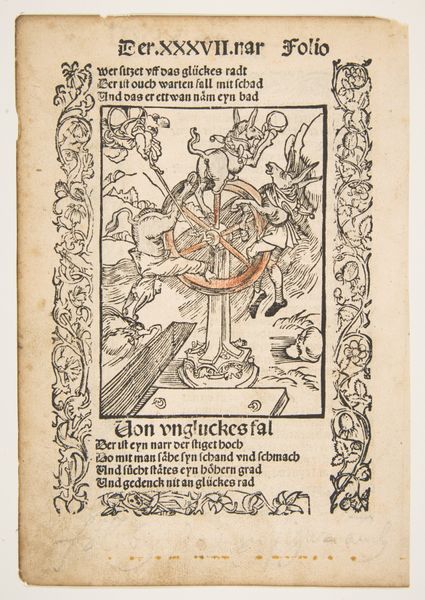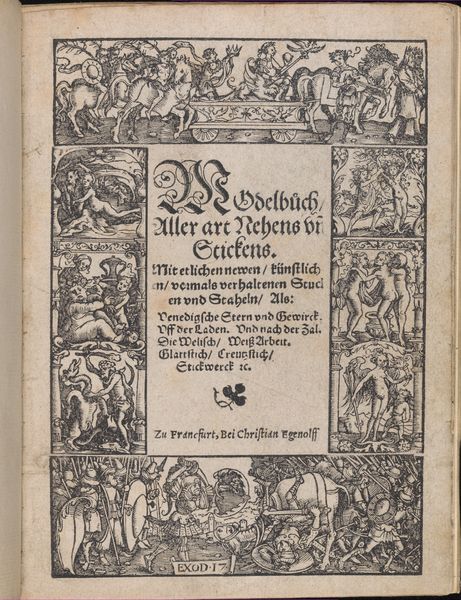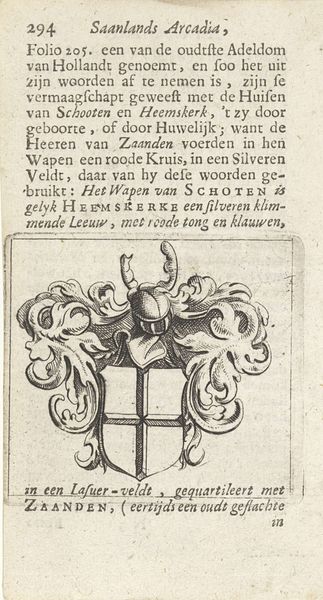
drawing, print, woodcut
#
drawing
#
pen drawing
# print
#
figuration
#
11_renaissance
#
woodcut
#
northern-renaissance
Dimensions: sheet: 6 3/16 x 4 1/4 in. (15.7 x 10.8 cm)
Copyright: Public Domain
Curator: Standing before us is "Title-Page Border," a work created around 1525 by Daniel Hopfer. It employs the woodcut technique, realized with pen and drawing. What do you make of its overall presentation? Editor: Its dense composition creates an almost claustrophobic feeling, though the contrast is striking. The profusion of figures interwoven with ornate decorations certainly dominates the central text. The sheer intricacy is impressive; what purpose did this level of detail serve? Curator: In the Northern Renaissance, the printing press was revolutionizing the spread of information, so borders like this served to enhance and embellish texts. Beyond decoration, the figuration suggests an attempt to give the content added weight, visual importance. Note how mythical creatures blend seamlessly with religious imagery. Editor: Right. The presence of what seem to be satyrs combined with putti and the basket overflowing with fruits creates a somewhat incongruous blend of pagan and Christian symbols, right? Were these kind of images usually used in a religious or social context at that time? Curator: Indeed. Consider how societal shifts influenced artistic expression; the Reformation was gaining momentum at the time, which could explain a conscious effort to synthesise diverse imagery, and establish a unified visual and intellectual space on the page. I suspect there's much that is symbolic in the cornucopia of images contained. Editor: I agree that is compelling, given the political turmoil and religious divides brewing. Looking closely at the faces and the composition gives the distinct impression of many voices jockeying for prominence—an intense visual argument rendered within firm boundaries. How amazing is the contrast between chaos and strict structure. It really pushes you to look at its composition deeply. Curator: Its construction reflects an era of transition—the decline of traditional religious authority and the burgeoning emphasis on individual expression and exploration. Thank you for shedding light on that aspect of this visually complex artwork. Editor: Thank you! Thinking of this woodcut as a reflection of sociopolitical tensions definitely makes you reflect more about it.
Comments
No comments
Be the first to comment and join the conversation on the ultimate creative platform.
